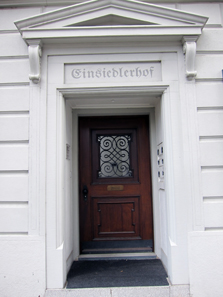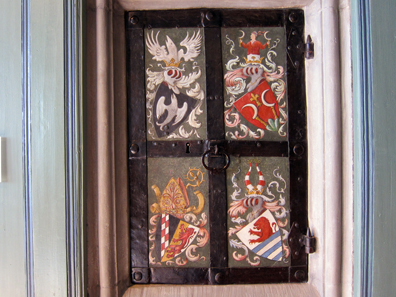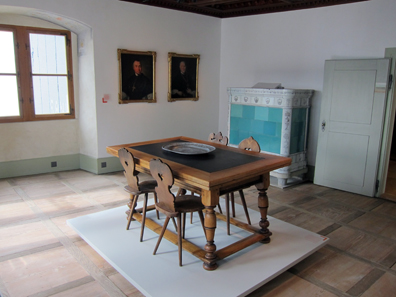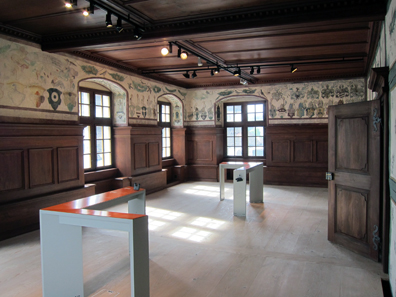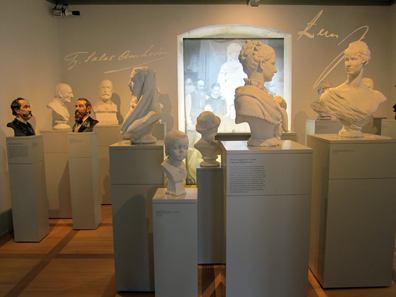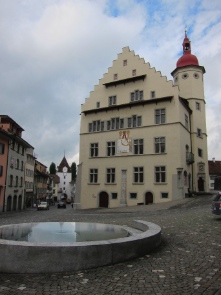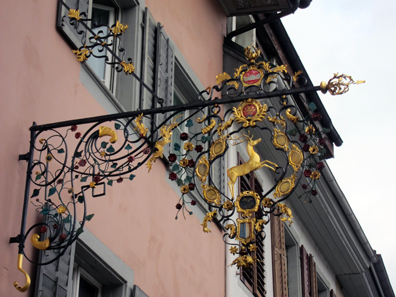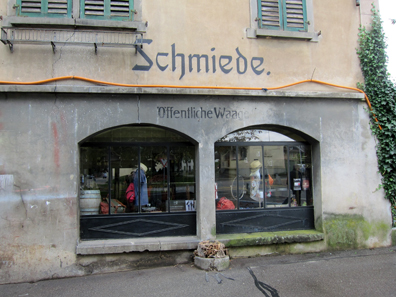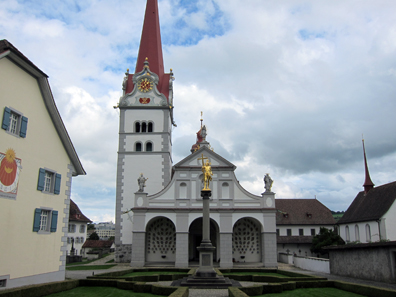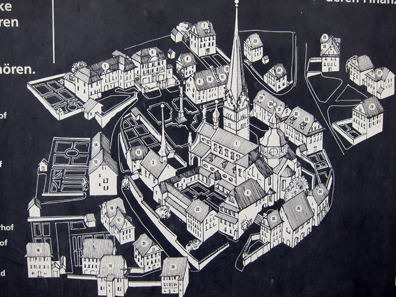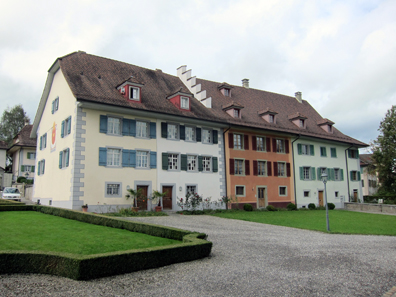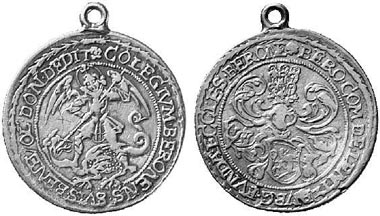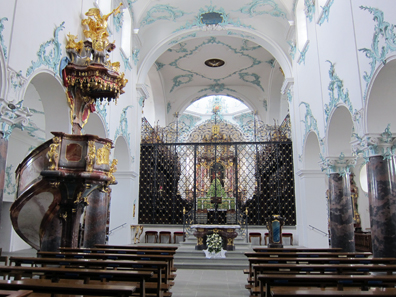[bsa_pro_ad_space id=4]
Normal 0 21 false false false DE JA X-NONE
by Ursula Kampmann
January 2, 2014 – Do you know that situation: the last holidays have long passed away, the next ones are still in the far future. And you are getting the feeling that you should do something, anywhere, anyhow. That’s an excellent idea because sometimes the really interesting destinations are just a stone’s throw away as for example the town of Sursee and the minster of Beromünster from Lörrach. Only few tourists have visited these destinations. And that’s a shame because there you can learn quite a lot about how monasteries in Switzerland once operated from an economical point of view.
Sankturbanhof in Sursee. Photo: KW.
Normal 0 21 false false false DE JA X-NONE Let’s start with the highly intriguing museum of Sursee by the name of Sankturbanhof. Not many visitors will reflect on how the building has come to its name. But it’s simple. The building is named after an abbey some 30 kilometres away. Sankturbanhof were called the quarters of the steward of St. Urban’s abbey in Sursee. And of course the abbot himself stayed there when he came to Sursee to inspect the property of his abbey in that region.
The Einsiedlerhof in Sursee. Photo: KW.
Normal 0 21 false false false DE JA X-NONE Not only the abbot of St. Urban travelled much. Close to the Sankturbanhof the Einsiedlerhof is located which had exactly the same function to the Benedictine abbey Einsiedeln.
The steward’s desk. / Sankturbanhof. Photo: KW.
Normal 0 21 false false false DE JA X-NONE
In both houses the economical centre was the desk of the steward who took care of the revenues collected in the place.
The steward’s safe / Sankturbanhof. Photo: KW.
Normal 0 21 false false false DE JA X-NONE
Normal 0 21 false false false DE JA X-NONE
The steward handled large sums of money and important documents since he collected on the abbey’s behalf the outstanding tithe and interests. And he, too, spent the money: he supervised the craftsmen and peons who worked on the estates of St. Urban. In order to prevent burglary, in 1607 the steward had constructed a safe which still exists today. It was decorated with marvellous paintings in the second half of the eighteenth century. On the left you can see the crest of St. Urban featuring a crosier and a mitre.
The abbot’s parlour. / Sankturbanhof. Photo: KW.
Normal 0 21 false false false DE JA X-NONE
From time to time the abbot of St. Urban would come to Sursee to supervise his steward and take the important decisions. During his stays he had a large reception room at his disposal with a simple wood-framed table made of slate where he could dine with his guests or study documents and accounts. The slate was even useful when the abbot had to check some balances writing with chalk on the desk.
The abbot’s reception room / Sankturbanhof. Photo: KW.
Normal 0 21 false false false DE JA X-NONE
But naturally there was also need of something more prestigious. In occasion of receptions and official moments the abbot used the ceremonial hall decorated with paintings from about 1600.
Detail of the painting. Photo: KW.
Normal 0 21 false false false DE JA X-NONE
We find crests and birds. And the choice of the bird species was not done by chance. They all are somehow connected with legends focussed on the life of Christ. Here, for example, we see a goldfinch. It was said to have tried to draw the spins from Christ’s crown of thorns to ease HIs pain. God rewarded him by awarding him the red spot around his beak. And in fact, if you view religious paintings of the Renaissance, you often will find the Christ child playing with a goldfinch as symbol for the unavoidable passion.
Coin hoard of Sursee. Photo: KW.
Normal 0 21 false false false DE JA X-NONE
Beyond that, you will find many other interesting objects concerning numismatics and economic history. This picture shows a coin hoard, which was found combined with some rosaries within an old farmhouse of Sursee in 1982. The hoard featured in total 706 coins hidden around 1843. The total value corresponded to 3.290 Swiss franks – back then a fortune! The regional teacher of Sursee would have had to work about one and a half years in order to earn a comparable amount. Nearly all the coins originate from France. And this is a clue that it was a wise decision of the Swiss Federal Assembly to follow the French franc in 1848.
Plaster heads, Producing them was a lucrative business model in the 19th cent. Photo: KW.
Normal 0 21 false false false DE JA X-NONE
Some rooms of the museum are dedicated to local industries, of which we do not even dream that they have existed. For generations, the Amlehn family for example made their living creating portraits of plaster. They were much cheaper than marble portraits. And the bourgeoisie loved to have their members formed in plaster.
Julius Beck (1855-1920), lawyer, town clerk and conservative politician in the Canton of Lucerne. Photo: KW.
Normal 0 21 false false false DE JA X-NONE
This coloured plaster bust of the conservative politician Julius Beck gives a good impression how realistic such portraits could be.
Johann Crescenz Meyer, Mystical Marriage of Mary. Photo: KW.
Normal 0 21 false false false DE JA X-NONE
Visiting a baroque church nobody is aware that producing the décor was a real good business model. Sursee specialized in reverse glass painting.
The town hall of Sursee. Photo: KW.
Normal 0 21 false false false DE JA X-NONE You will notice the economic importance of this city located at the Gotthard route, when having a look at the impressive town hall …
Inn sign of a tavern. Just guess the name of the inn… Photo: KW.
Normal 0 21 false false false DE JA X-NONE
… and the elaborate inn signs.
The weighing house, occupied today by a fashion boutique. Photo: KW.
Normal 0 21 false false false DE JA X-NONE
Where once a city gate broke the wall we still find an old inscription on a house: Öffentliche Waage (= public scales). For centuries, everything brought into the city had to be weighted in order to fix the duties.
The tower of the collegiate church of Beromünster. Photo: KW.
Normal 0 21 false false false DE JA X-NONE
The first reference to Sursee dates back to the first half of the eleventh century. We hear about it in a document stating that Ulrich of Lenzburg (+ between 1045 and 1050) donated a farm to the canons of Beromünster financing with it the pastoral care of the church of Sursee. And this is a wonderful segue to our next station, the village of the canons at Beromünster.
The baroque church. Photo: KW.
Normal 0 21 false false false DE JA X-NONE
Beromünster is said to have been founded at the place, where count Bero was killed bear-hunting. A likely story! The first historical testimony is a document stating that Ulrich of Lenzburg established a collegiate foundation in honour of St. Michael in 1036. He choose a legal structure which became very popular in the 11th century.
Site plan of Beromünster featuring the houses of many priests. Photo: KW.
Normal 0 21 false false false DE JA X-NONE
Cluny had enforced the new demand that canons should live like the monks did: without wives and far away from secular affairs. A collegiate foundation made this way of living possible for secular priests.
The priests’ houses. Photo: KW.
Normal 0 21 false false false DE JA X-NONE
The priests of St. Michael acted in parishes far away – or at least, they had a vicar doing their job. They themselves lived in their own little houses in Beromünster financed by farms located in various parts of Switzerland. The donation of Ulrich of Lenzburg at Sursee is a wonderful example for the way, priests were financed at that period.
Medal featuring St. Michael, ca 1619. Künker 77 (2002), 1036.
Normal 0 21 false false false DE JA X-NONE
Normal 0 21 false false false DE JA X-NONE
By the way, St. Michael in Beromünster is of numismatic interest. They had struck silver medals featuring their patron saint on one side and the abbot’s crest on the other side. They were used as non-monetary but nevertheless precious gifts and honours for those the abbot wanted to integrate in his social network. This could be friends or donors, sometimes even craftsmen and musicians.
Interior of St. Michael. Photo: KW.
Normal 0 21 false false false DE JA X-NONE
Let’s finish with a last glance into the church. If you ever get the chance, visit this place during the Holy Week. You will see there one of the last preserved baroque architectures made of wood. Settings like these were staged as Holy Graves in all churches of that period.
Here you will find the Website zum Museum. Unfortunately it’s only in German.
The same with Beromünster.






